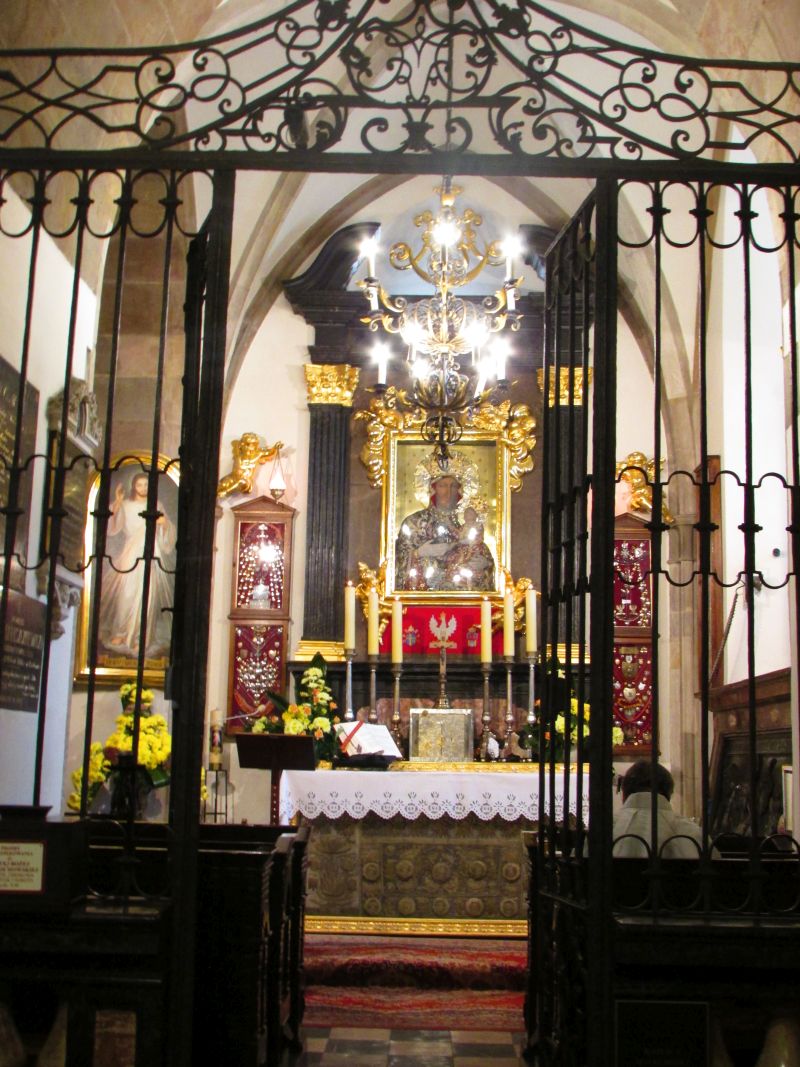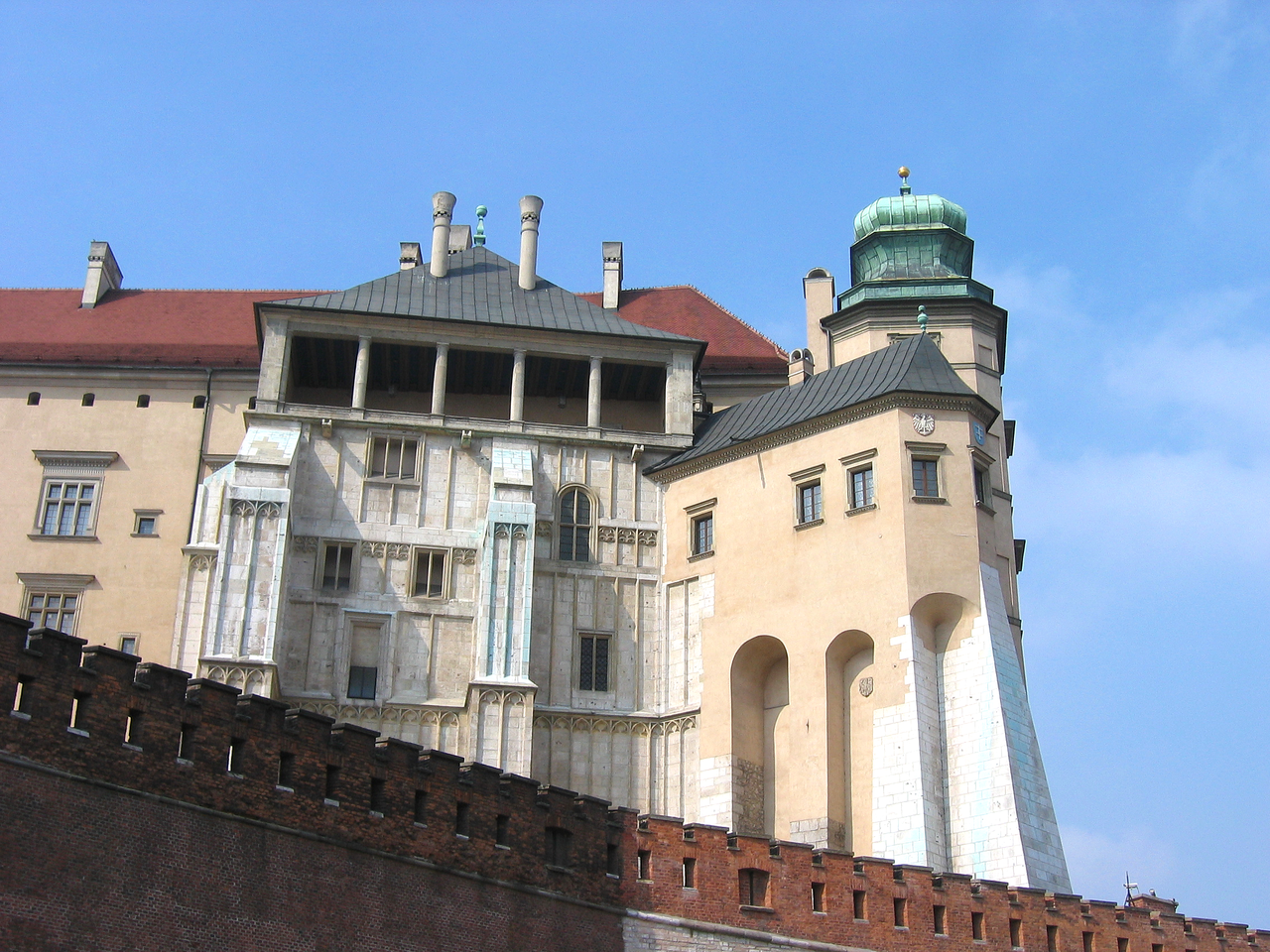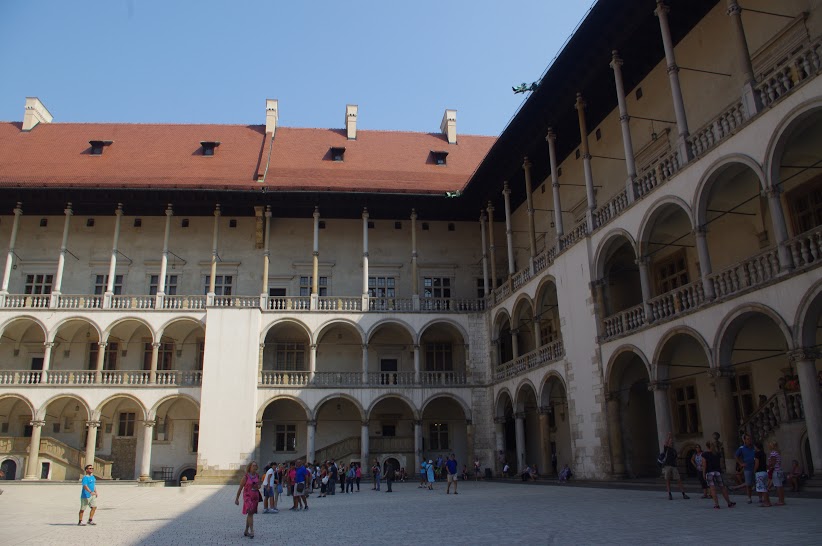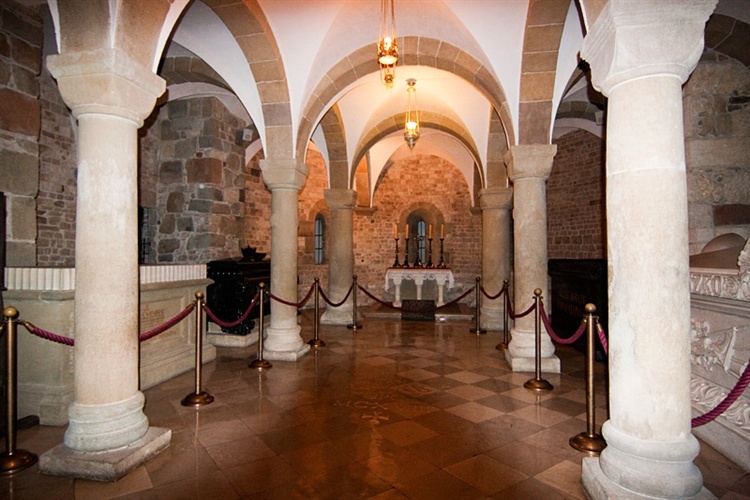 Wawel – Katedra – Kaplice i groby królewskie
Wawel – Katedra – Kaplice i groby królewskie
Otaczające wieńcem Katedrę Wawelską kaplice powstawały od XIV w. na zlecenie królów, biskupów i magnatów. Przez stulecia były przebudowywane, nowsze wznoszono na miejscu starszych. Zmieniali się właściciele, obowiązujące style i nazwy. Kaplice, które miały pełnić funkcję zbliżoną do mauzoleów, odegrały o wiele ważniejszą rolę – stały się żywą księgą historii Polski. Utrwaliły także znamienne cechy epok od gotyku po klasycyzm, dając przykłady mód zdobnictwa, odzwierciedlając w liniach i rzeźbach charakter minionych czasów. Zabytki te odzwierciedlają rozwój architektury, rzeźby, malarstwa i sztukatorstwa, pozwalają też poznać stosunek przodków do śmierci i ich wyobrażenia na temat życia wiecznego.
Jak podaje legenda, w czasach św. Stanisława wyniknął spór pomiędzy władzą kościelną a świecką o pewne dobra ziemskie, które należały do nieżyjącego Piotrowina. Św. Stanisław, na potwierdzenie racji Kościoła, wskrzesił Piotrowina, który potwierdziwszy przed zebranymi, że swoje dobra oddał Kościołowi, na powrót legł w grobie.
Groby królewskie
Nie wszyscy książęta, królowie i królowe Polski spoczywają na Wawelu, zaś grobów kilku prastarych władców niegdyś tu pochowanych (jak na przykład Kazimierza Sprawiedliwego, Leszka Białego czy Bolesława Kędzierzawego) nigdy nie odnaleziono. Początek wawelskiej nekropolii dał Władysław Łokietek zmarły w 1333 r. i od tamtej pory prawie wszyscy władcy kończyli swoją ostatnią drogę na Wawelu – albo w płytszych grobach pod posadzka kościoła (do czasów Zygmunta Starego), albo w kryptach.
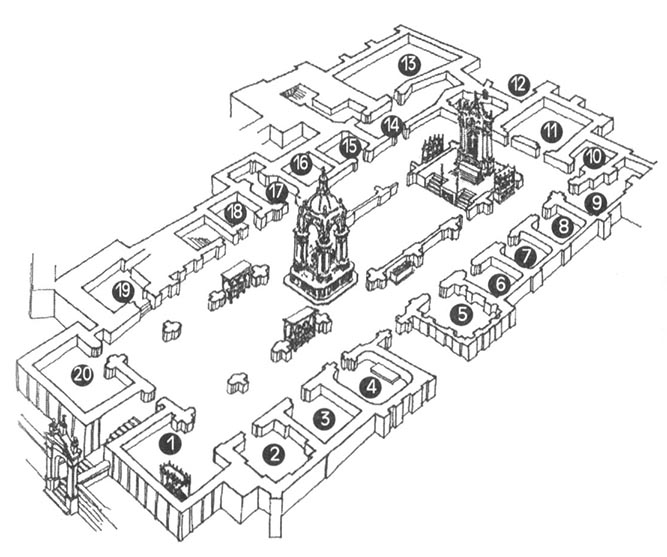 Spis kaplic w Katedrze Wawelskiej
Spis kaplic w Katedrze Wawelskiej
1. kaplica Świętokrzyska
2. kaplica Potockich
3. kaplica Szafrańców
4. kaplica Wazów
5. kaplica Zygmuntowska
6. kaplica bpa Konarskiego
7. kaplica bpa Zadzika
8. kaplica Jana Olbrachta
9. kaplica bpa Grota
10. kaplica bpa Tomickiego
11. kaplica Mariacka (Batorego)
12. kaplica bpa Gamrata
13. skarbiec katedralny
14. zakrystia
15. kaplica bpa Zebrzydowskiego
16. kaplica Skotnickich
17. kaplica Lipskich
18. kaplica bpa Maciejowskiego
19. kaplica Czartoryskich
20. kaplica św. Trójcy
Przegląd kaplic i grobowców najlepiej zacząć od lewej nawy, czyli od miejsca najbliższego drzwiom wejściowym.
Kaplica Świętej Trójcy, zwana także kaplicą królowej Zofii (albo Sonki), która przedłuża nawę lewą, czyli północną, mieni się soczystymi kolorami niczym lanterna magica, zwłaszcza kiedy przez cieple witraże przenika światło słońca. Ufundowana przez czwartą żonę Jagiełły -królową Zofię Holszańską, została wzniesiona w latach 1431-1432, ale częste przebudowy zatarły jej późnogotycki charakter. We wnętrzu zaznaczyły się mocno tendencje panujące w sztuce Młodej Polski – ściany i sklepienia pokrywa ekspresyjna polichromia Włodzimierza Tetmajera, wykonana w 1904 r., przedstawiająca postaci słynnych Polaków. Pomnik w stylu antycznym obok wejścia to wizerunek pułkownika napoleońskiego Włodzimierza Potockiego. Wdzięcznym kontrapunktem marsowego pomnika jest płaskorzeźba przedstawiająca Konstancję z Poniatowskich Tyszkiewiczową.
Następna w kolejności kaplica Czartoryskich (Męki Pańskiej), znajdująca się w przyziemiu Wieży Zegarowej, stanowi przejście do grobów królewskich. Uwadze spieszących w otchłanie krypt uchodzi często dość nisko usytuowana płyta epitafijna z płaskorzeźbą o całkowicie gładkiej twarzy, pewnie zagłaskanej albo wytartej plecami modlących się.
Gdy posiedzieć chwilę przed wejściem, można podpatrzeć scenki rodzajowe ukazujące katedrę „od kuchni”: babcie ze szczotkami i wiadrami myjące posadzkę lub starszawych panów dzierżących z odcieniem pietyzmu i dumy służbowe krótkofalówki.
Przebywanie w pobliżu grobów osobistości, mających w swoim czasie do powiedzenia więcej niż inni, tych, których polityka znajduje odniesienie w naszej rzeczywistości, to kontakt z historią, zupełnie inny niż podziwianie zaoranego pola pod Grunwaldem. Oto w jednym miejscu spoczywają kości bohaterów opiewanych w legendach i tych, którzy jak Jagiellonowie, byli twórcami wielkości Polski. W godzinach zwiedzania zawsze tu tłoczno i gwarno, a że pomieszczenie niskie, ciemnawe i niezbyt obszerne, trzeba uzbroić się w cierpliwość.




